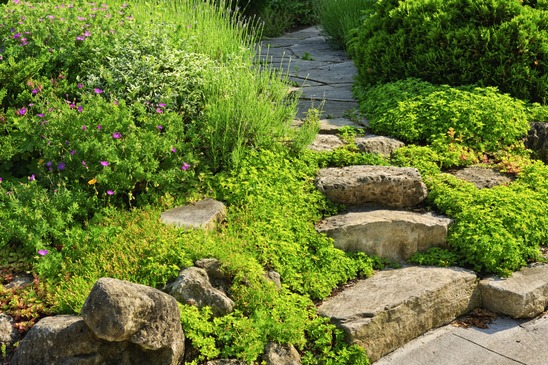An attractive backyard is the perfect accent to your home. However, maintaining your lawn can come at the expensive of your time and money. Ground cover is a good alternative to the traditional, grass lawn. It’s more manageable, while maintaining your lawn’s aesthetic appeal. If you’re considering renovating your backyard with ground cover, here are few tips to get you started.

Select the Correct Type of Ground Cover
Just like anything else you plant in your yard, it’s important to select the right type of ground cover for your lawn. Even though ground cover plants require less maintenance, their viability greatly depends on several conditions. Climate is one of the most important factors to consider when selecting plants. Find out what plants are best suited for your home’s planting zone. You also need to consider where you intend to plant. Certain plants grow successfully in areas of direct sunlight. Other plants flourish in the shade.
Assess Your Landscaping Needs
Ground cover plants can serve multiple purposes in your yard. Certain types of ground cover make excellent substitutes for grass and can handle high traffic areas. They’re ideal for areas where grass won’t grow, places where mowing is difficult and places where erosion is a problem. Dead nettle and clover and just a few grass-replacement options. In addition to serving as a grass substitute, ground cover can add an array of texture and color. Combining these plants with existing shrubs and flowers can create a variety of visual effects. These types of plants also improve areas that are sparse or uneven.
Planting Your New Ground
The way you plant ground cover depends on where it’s planted. With all planting projects, it is important to clear the area of any existing grass and weeds. To calculate how many plants you will need, multiply the planting area’s width and length. Find out how much each plant will spread. Divide the total amount of square footage by this number to determine the appropriate number of plants.
Unique Forms of Ground Cover
When using ground cover in backyard renovations, the majority of thought involves plants. However, rocks and concrete are also viable options. Concrete is versatile because it is available in a variety of finishes and colors. It is also a durable material. Concrete can be used to create pathways through the yard, or it can transform an unattractive area into a patio space. Decorative rocks can also make a great ground cover. These stones come in a variety of colors and can accent an existing flower bed or be used to section off areas of the lawn. Rocks also help conserve water by preventing run off and evaporation.
The variety of ground cover renovations can range from installing natural elements, like plants and rocks, to concrete patios and sidewalks. Their benefits and aesthetic appeal can help you transform your back yard space from dull to one you’ll proudly enjoy. If you live in the Toronto, Canada area and need help choosing the right type of ground cover for your lawn, feel free to contact us for assistance.
